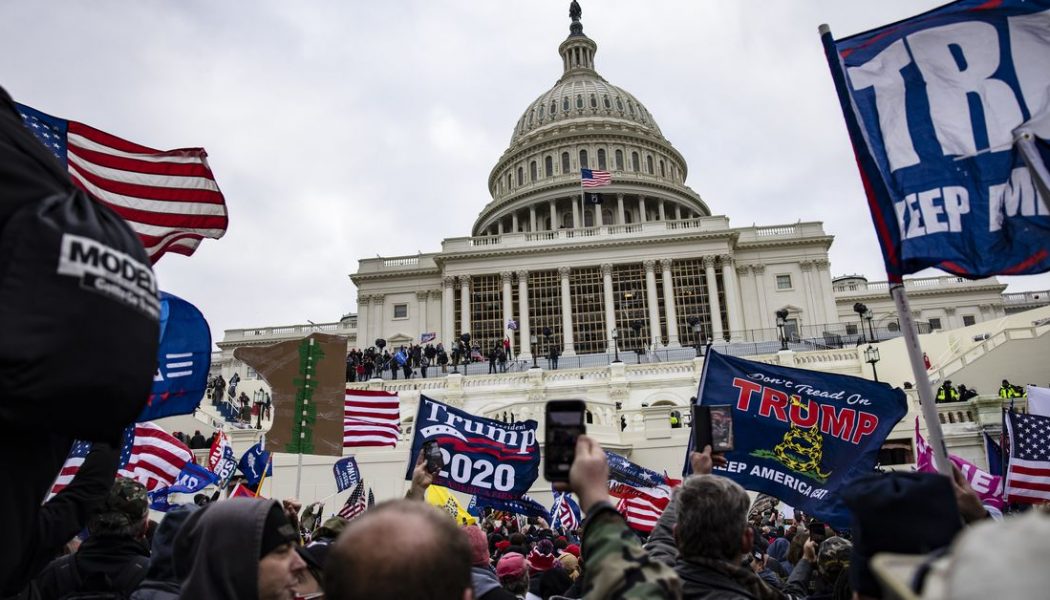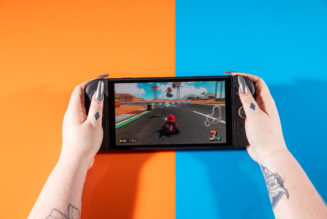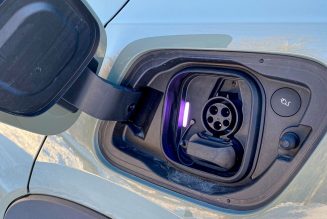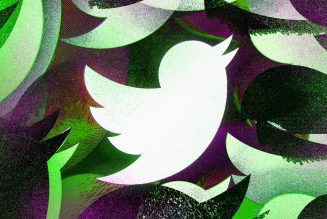
As you no doubt already know, today, President Trump incited his followers to storm the US Capitol, where they disrupted the constitutionally mandated certification of the Electoral College ballots, affirming Joe Biden’s victory against him. Odds that his ongoing attempted coup will succeed remain low, but not impossible. And a bedrock belief that many of us have carried all our lives — that American democracy will long outlast us — has never been so shaken.
Yesterday, I wrote about the sense that the fracture in our shared sense of reality seems to be accelerating. I asked whether platforms ought to take it as a moral responsibility to reverse that divide — and, if so, how. Today, I advocate for one smaller but still difficult and essential step in that direction.
It’s time for Facebook, Twitter, and YouTube to remove Trump.
Calls for platforms to remove Trump have been coming for years. The president’s use and abuse of Twitter to threaten nuclear war, attack average citizens, and undermine elections have been a defining feature of the media landscape since his 2016 campaign. Twitter has aided and abetted the president for years, putting him on its suggested user list even as he promoted the birtherism conspiracy and spread other racist lies.
In February 2017, a year into Trump’s presidency, Verge executive editor TC Sottek called on Twitter to pull the plug. “Twitter is not an internet service provider or anything resembling a utility,” he wrote. “It has no obligation to behave like a neutral party; in fact, given its unique position to influence Trump’s behavior, it arguably has a moral obligation to take action.”
What Sottek wrote is true. But for years, I opposed Twitter and others deplatforming the president. My reasons were largely practical ones. Surely, the president would decamp to a smaller site if banned; surely, a Twitter bot would scrape and instantly tweet anything he posted elsewhere, largely defeating the point of a ban. As irritating as the move surely would have been to Trump, I thought, the gesture would largely have been symbolic. And at the end of the day, the man was the duly elected president.
No longer. Americans voted Trump out of office, but instead of accepting that result, he has sought to overturn it. By inciting the violent occupation of the US Capitol, Trump has given up any legitimate claim to power. In 14 days, barring catastrophe, he will be out of office. The only question is how much damage he will do in the meantime — and we know, based on long experience, that his Twitter and Facebook accounts will be among his primary weapons.
“There have been good arguments for private companies to not silence elected officials, but all those arguments are predicated on the protection of constitutional governance,” said Alex Stamos, former chief security officer at Facebook. “Twitter and Facebook have to cut him off. There are no legitimate equities left and labeling won’t do it.”
The platforms did take some steps today to limit the president’s reach. In a less than half-hearted effort to encourage his mob to abandon the Capitol, Trump posted a chaotic, lie-filled address to Twitter and Facebook. “We love you,” he told the mob. “You’re very special.” Twitter initially labeled the video as disputed and prevented it from being liked or retweeted, though quote-tweets still allowed it to spread far and wide.
Facebook took it down. “We removed it because on balance we believe it contributes to rather than diminishes the risk of ongoing violence,” said Guy Rosen, the company’s head of integrity.
Then Twitter took it down, too. (And ultimately suspended the president’s account for at least 12 hours.)
Later in the day, Trump celebrated the attack on his own government. “Remember this day forever!” he tweeted.
That appalling message could alone be grounds for removal from the platform. But the problem goes far beyond any one post. We know by now that there will always be more and worse posts to come.
And the rot runs deep. In a Facebook “Stop the Steal” group, a user called for the mob to “Burn the chambers!” On Telegram, neo-Nazi accelerationists heralded the arrival of a second Civil War. And inside the Capitol, the terrorists stopped for selfies and broadcast themselves live on the platforms.
It was a coup that was designed for, and helped made possible by, social media.
The violence should not only or even primarily be attributed to the big platforms. As Jane Lytvynenko and Molly Hensley-Clancy reported at BuzzFeed, today’s violence has been planned in the open on niche web forums and conservative alt-network Parler.
But the big platforms also played a role, they wrote:
Even on mainstream social media channels like Twitter and TikTok, calls for violence were easy to find. According to Advanced Democracy, more than half QAnon-related accounts on Twitter — about 20,800 — mentioned Jan. 6, although the majority of the posts didn’t explicitly call for violence.
Enough is enough.
Trump ought to be removed from office. He ought to be prosecuted for his crimes. And so should the insurrectionists who stormed the Capitol and sought to end our democracy. (Instead, most of them appear to have walked away without so much as being arrested.)
Given the stakes here, whether the president has access to his social media accounts is and at most a secondary concern. But I cover the intersection of tech platforms and democracy, and what platforms can and should do for our democracy today is to finally pull the most powerful lever they have.
They will have elected officials of both parties on their side. Republican Sen. Mitt Romney called today’s events “an insurrection, incited by the President of the United States.” William Cohen, a former Republican senator, called for the Cabinet to invoke the 25th Amendment. So did the anarchist liberal firebrands over at, uh, the National Association of Manufacturers.
Across the aisle, Rep. Ilhan Omar (D-MN) announced she would draw up articles of impeachment. “It’s a matter of preserving our Republic,” she said, “and we need to fulfill our oath.”
Indeed, advocating for the overthrow of the government is a crime, even and especially when it is the president advocating the overthrow. Losing the ability to tweet is not nearly the punishment Trump and his enablers deserve for putting our entire democracy at risk. But today’s events have made it clearer than ever before that doing so is not just possible, but necessary.
No one should be under the illusion that deplatforming Trump will end the erosion of our democracy. But we saw today that Trump’s continued presence will accelerate it. And should he leave office with his platform intact, he can immediately declare his candidacy for president in 2024 and use it to further escalate his attacks on the republic.
If there is to be any silver lining in today’s awful events in Silicon Valley today, it should be that they give the people running our platforms a new moral clarity about their role in world events. Deplatforming is a step not to be taken lightly. But millions of people have been deplatformed for far less than what Trump has done.
The time has come for Facebook, Twitter, and YouTube to act.
Ban Trump now.
This column was co-published with Platformer, a daily newsletter about Big Tech and democracy.










